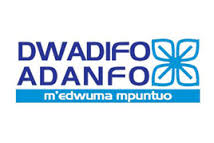It is absolutely true that institutions, industries and indigenous set-ups, structures and their modus operandi,  evolves through various stages of transformation. I am surely not against this trend since change has become the only constant in today’s fast growing world. My only beef is when the focus and utmost objective of the so called evolving entities which form the backbone of the entity gets compromised for questionable motives to the extent that vulnerable beneficiaries of the entity gets thrown overboard. I am referring to no other but the microfinance industry in Ghana.
evolves through various stages of transformation. I am surely not against this trend since change has become the only constant in today’s fast growing world. My only beef is when the focus and utmost objective of the so called evolving entities which form the backbone of the entity gets compromised for questionable motives to the extent that vulnerable beneficiaries of the entity gets thrown overboard. I am referring to no other but the microfinance industry in Ghana.
The name and spirit of the term and concept of microfinance seems to constantly suffer unnoticed perversion which if not checked will plunge the country into the same problem this institution seeks to solve. Microfinance, in its unadulterated sense is an economic developmental tool that seeks to provide financial and social intermediation services to the low income self-employed clients. It is a very critical sector to the financial system of our economy considering that an estimated 80 percent of eligible Ghanaian population is said to be either unbanked or under banked. The obvious reason is the incompatibility of many stiff jacketed operations of the commercial banks with the informal economic life styles of the indigenous people and/or less educated low income micro entrepreneurs. Microfinance provides much solace in the financial system to these clients since its products are flexible and tailored to offer adequate financial services to this large percentage of people who do not fit into the commercial banking system. It serves as a tool to also mop up extra liquidity while offering other social intervention services to bring economic empowerment to the poor. If these definitions were what pertained today in its entirety, I wouldn’t be in the least perturbed. However I find so much difficulty understanding what today’s meaning of microfinance really is.
Microfinance has become a budding ground for courting big income earners. With its core objectives bordering on helping the poor and/or indigenous people and/or less educated low income micro entrepreneurs, one would have thought the first point of call would be in the rural and less endowed areas of the country. To the contrary, the larger chunk of microfinance companies is concentrated in the urban centers. This I believe constitutes the biggest source of the perversion of the industry. The names they will choose for their companies in recent times do not even resonate with the premier target group for microfinance. We no longer hear the local names like the SINAPI ABAs. We rather hear the U-Track Financial Services, Aiden Microfinance, Mighty Financial Services Limited and the kind. Even those that have gained the financial base to expand into the rural areas keep pushing into the central business districts of bigger cities. They claim to have come into the microfinance industry with the aim of reaching the Micro, Small and Medium-scale Enterprises MSMEs in the urban centers but that’s just it. No social interventions, just courting them for juicy returns on deposits after maintaining levels of deposits within stipulated periods. This clandestine agendum aimed at feeding their big investment gambles often fail over poor liquidity risk management. This accounts for the highly indebtedness and the eventual running down of these companies shortly after their take off. The rippling effect of these bad nuts is the dinting of the image of this relatively young industry. Victims of these companies are still licking their wounds and variously vow never to deal with financial institutions and sure spread this message to others. Where then does this leave us when we ground back to square one?
Where, one may wonder are the social intervention services in the definition of microfinance to these quickly springing up microfinance companies. The village banking system introduced by the founder of the concept of microfinance, Mohamed Yunus which sees people organized into groups easily accessible for quick social services finds little or no expression in today’s microfinance. ROTATING SAVINGS and Credit groups ROSCAs have been left unattended to in the hands of non professionals. It shouldn’t have been out of the normal occurrence for microfinance staff to leave their air-conditioned offices to offer some non financial services to their clients. Some of the basic operations of microfinance was to form groups and train them in issues of record keeping, management, financial literacy, how to live healthful lifestyles and the like in very understandable language. These groups which also acted as loan guarantee units of the institution also occasionally received training in specific areas of their enterprise to make the best out of their trades. Microfinance companies in the spirit of Rural and Agricultural Finance should be leading extension officers to educate farmers on better ways of increasing yields. It is very sad to note that a negligible number once in a while inculcate these activities into their operations. They are rather engrained in the financial inflows and care less about how the monies come in. I guess the financial service brings much financial masters into the industry than the social service creates service driven men in the industry. A supernormal profit at the expense of social services to the target group of microfinance is simply not acceptable to the epistles of microfinance. The earlier these institutions got this into their books the better.
Another sphere of perversion quite wincing to speak of is the large effective interest rates charged to its relatively poor clients. I will recall a preacher from the Netherlands who asked “do you claim to be helping the poor in Ghana with loans whose effective interest rates amount to 47%?” I suppose he was even more stunned at this realization considering the fact that large multinational corporations in his country borrowed at less than 5% per annum. He might have passed out if he dug deeper to see the 60 and 70 percents per annums. The worse pinch of this interest rate calculation is that, microfinance companies would rather use straight line computations rather than the reducing balance method to calculate these rates on loans disbursed to these MSMEs and other clients. Oblivious to their clients, with the reducing balance system, interest is charged on outstanding balance in arrears while with the straight line method the interest is charged on the whole principal amount contracted even when part has been defrayed. At least conscience should tell you not to rob the poor person of his meager possessions. No one is advocating playing charity with a business enterprise in the face of target profits, inflation, interbank commercial banking rates and the scarcity of donor funds and the leaning of concessionary loan facilities. However something can largely be done to beat down the effective interest rates of clients. Most of these institutions raise the argument of the high credit risk to these sky rocketing interest rates. They see enough ground to push very high figures for “provision for bad dept” and insurance to their interest rate computations. However in the same vein, these institutions boast of recording very low bad debts which should have translated into lowering of these percentages but will deliberately fail to effect these changes. Some also take advantage of the fact that their clients are not so sophisticated to calculate their accumulative and effective rates and con them with less informative nominal interest rates. Milking the poor over technicalities of nominal interest rates and staggering the payments to shroud the aggregated effects of the huge interest rates accumulated from each monthly payment is how I call this. This could be described as stabbing someone with a knife embellished with roses. They would come to a defense with “the end justifying the means” but forget that the win-win situation in their context came at a higher cost to the weaker among the two.
Microfinance has now become a stepping stone to commercial banking status. It is just a mark time mode until enough money is raked in to meet Bank of Ghana BOG minimum capital for commercial banks. The posture and communication of most managers of microfinance companies reveals a hidden agenda or better put a long term objective to abandon microfinance and get into the traditional commercial banking arena. Does microfinance seem less dignifying to these managers? I dare to think so. You will see it in the upgrading of status of most of these institutions. From XYZ microfinance to “we are now called XYZ savings and loans”. That I guess gratifies status and then finally you will hear XYZ is now a bank. UT financial services limited to mention a popular brand played this out beautifully and is now UT bank. Not to preempt their motives, SINAPI ABA is now in the Savings and Loans level and First Capital Plus a Savings And Loans company has just tied in all ends to attain commercial banking license from the Bank Of Ghana.
The utterances and posturing of the staff and managers of this industry betrays their misunderstanding of what microfinance is all about. The backgrounds of most of the managers of these companies as well as their employees leave much to be desired in terms of professional training in microfinance. The course is even in short supply in the country’s educational system. It will surprise you to know that a few and quite magnanimous ones really know the background and origin of microfinance. How can an industry thrive if the very managers of the industry lack the requisite knowledge of what the industry stands for and aims at? You can’t imagine how these staff clamor for positions in the commercial banks like the Zeniths, and the Stanbics and the Barclays and ECO Banks. How they would love to deal with the clients with the big cars and the fat L’argents. At least they will not get to deal with the local market woman who comes in speaking vernacular, smelling of fish for her job or the “trotro” mate who comes in sweaty allover and will demand some close range direct assistance to drop some cash and rush back to his bus. Not to talk of gaining the internationally recognized big names in commercial banking on their CVs other than the “Amansan Boafour”, “Kuafour Adamfo” and “Akurofuom” microfinance. The work of microfinance, I accentuate, is a calling to its large extent which yet requires that academic polishing to make it glitter in benefit to its large target customers abundantly available in developing economies. It is not just a mere job and demands a heart and a character to operate with honesty in the industry. Some of their managers are not also spared from this worrying development. Some just perceive their employment status or their entrepreneur status as an agenda to test their financial management prowess with their current clients who possess little or no academic competence to interrogate their operations. The little spoken of them, the better.
Microfinance companies should do an objective check of their operations against the untainted object of their trade. I dare say that the current definition of microfinance is gradually becoming “Microfinance is a temporal stepping stone profit amassing tool that seeks to provide financial and no social intermediation services to the urban folk, the rich and self employed people in promising businesses with milkable financial returns in the country”. I will tell them now “If they want to play microfinance let them play. If they want to play commercial banks they should stick to the game. Don’t enjoy the benefit of the former and seek comfort in the over burdened arms of microfinance if you don’t measure up to its tasks and challenges. Be the wolf or the sheep to the people and expel your shrouded and counter beneficial agendum. If you feel there is a middle ground then lets create a new industry within the financial system and call it say “macrofinance industry”. That will sure align with your style of business and vindicate you. Oh! And be ready to pay for the mid-way requirements which the regulator will seek from you”. I don’t think this will be a big deal for these players since they should have accumulated more than much of a projected amount. They can do the mid way math and project the mid-way requirements. I will also urge the Bank of Ghana to step up its efforts at ensuring sanity in the system and draw the lines of demarcation more clearly. The various umbrella bodies like the Ghana Association of Microfinance Companies GAMC and the Ghana Corporate Susu Collectors Association GCSCA, if not also swimming in this perversion, should as a matter of urgency sit up and ensure that best practices are adhere to in this sector. If we are really serious about the long term sustainability of this Industry, it’s about time we put meticulous spectacles on these companies and hook them to some parameters to make this all important industry thrive. The industry still promises a lot of benefit to Ghanaians. It still has a large untapped customer base especially in rural Ghana. It has to develop better targeted services required to reach these people more strongly. Players in this industry who religiously go by the tenets of the profession should even be hooking some clients from the commercial banking system to access their better targeted services. Cleaning up the house will see this industry set itself on a high way of respect, progress and development while offering the best of services to Ghanaians.



